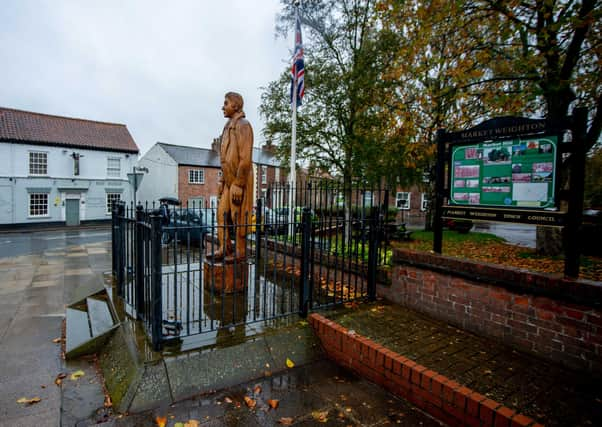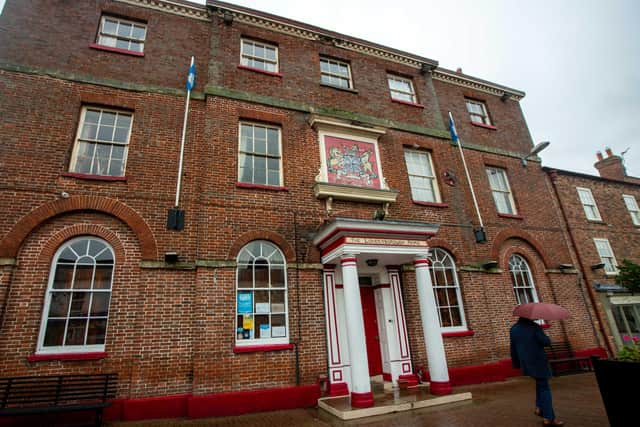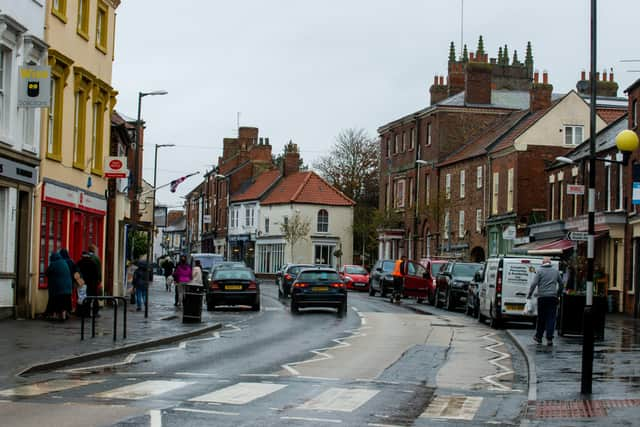Market Weighton - the little Yorkshire town with a giant past


Market Weighton may have a quiet, unassuming air about it today but, as with so many of East Yorkshire’s historic market towns, it has a few surprising claims to fame. Long regarded as one of the most important commercial centres in the Yorkshire Wolds, it once hosted what’s thought to have been Britain’s largest sheep fair.
In 1812, Hugh Edwin Strickland, a well-known geologist, ornithologist, naturalist and systematist, noted that there were “frequently from 70,000 to 80,000 large and nearly fat sheep upon the ground”.
Advertisement
Hide AdAdvertisement
Hide AdMeanwhile, the nearby hamlet of Kiplingcotes is the starting point for what is widely considered to be the world’s oldest flat horse race. The Kiplingcotes Derby dates back to 1519 and takes place on the third Thursday in March. This year, in a bid to preserve the tradition without breaching social-distancing rules, just two riders completed the course, which begins at the former railway station and finishes at Londesborough Wold Farm.


Given its long and eclectic history, Market Weighton has had its fair share of colourful characters too. Perhaps none more so than “Yorkshire Giant” William Bradley, who was born there on February 10, 1787, weighing an astonishing 14 pounds. The fourth of 13 children, by the time he was 20 William was 7ft 9in tall and weighed 27 stone. He was the tallest Englishman of all time and his name remains in the Guinness Book of Records to this day.
He spent many years touring with a group of travelling showmen and appeared at Hull’s famous annual fair. Word of his height spread and he was invited to meet King George III, who presented him with a gold chain that he wore for the rest of his life.
William eventually retired from performing and returned to Market Weighton, where he died on the May 30, 1820, aged just 33. He was originally buried in the grounds of All Saints Church, a Grade I-listed structure that is the only building in the town dating back to the Middle Ages. However, it was feared that body snatchers might try to steal his remains, so he was later reinterred inside the church itself.
Advertisement
Hide AdAdvertisement
Hide AdToday, the life of Market Weighton’s most famous son is commemorated with an annual Giant Bradley Day, which was launched in 1996 and sees stalls, exhibitions and entertainers take over the town centre, and with the Giant Bradley Heritage Trail, which takes visitors on a tour of noteworthy buildings.


A life-size oak statue of Bradley has stood in the Market Place since 2007, his former home on Market Hill is commemorated with a plaque and a section of the nearby A1079 is named Giant Bradley Way in his honour.
Although Market Weighton was built on the site of a much earlier Roman settlement, its name is Anglo-Saxon in origin and means “dwelling” or “dwelling place”. According to the Domesday Book of 1086, the area was referred to as a “Wicstun” and described as a district of 15 villages and 117 farms, which belonged to the crown and was valued at £30.
The town expanded in Georgian times as its significance as a centre of trade increased and the enclosure of what was previously regarded as common land boosted arable productivity. Many of its most prominent buildings date back to this period and have charming red tiled roofs, the Londesborough Arms hotel being a fine example. Built in 1786 in a yard off Market Place, Market Weighton’s Methodist Chapel is the earliest surviving Methodist chapel in East Yorkshire and John Wesley himself – the founder of Methodism – preached there in 1791, the year before his death.
Advertisement
Hide AdAdvertisement
Hide AdThe town thrived during Victorian times and was at its most prosperous following the arrival of the railways in 1847. It became a junction on the Selby to Driffield and York to Beverley lines, but today you would hardly know that the railway had ever passed through the town. The last train departed in 1965 and the station buildings were demolished in 1979. As people used the railway to travel further afield, it was largely responsible for the decline of the town’s traditional markets and fairs, along with the agricultural depression of the late 19th century.
From the mid-19th century until after the First World War, the town’s population steadily declined. However, in recent years, this trend has been dramatically reversed and hundreds of new homes have been built in the town to meet soaring demand. The opening of a bypass road in 1991 improved the environment for locals and visitors alike, who had previously struggled to cross the High Street at certain times of day.
Today a selection of independent shops and businesses ensure that residents, as well as the many walkers and cyclists who flock to Market Weighton, are well served. Popular routes include the Beverley to Market Weighton Rail Trail, which is open to walkers, cyclists and horse riders and follows the old railway line; the 79-mile Yorkshire Wolds Way; and the Minster Way, a 50-mile walk between the Minster towns of Beverley and York. The National Cycle Network Route 66, which takes in the rolling Wolds, also passes through the town.
A circular walking route with a geocache treasure trail for families to follow takes in the nearby village of Goodmanham, one of the oldest religious sites in England. Originally known as a place of Pagan worship, it became the birthplace of Christianity in the North during the time of King Edwin of Northumberland. It also happens to have a fantastic tea room called the Fiddle Drill.
Advertisement
Hide AdAdvertisement
Hide AdJust a couple of miles outside Market Weighton, Londesborough Park is one of East Yorkshire’s lesser known gems. Comprising a lake, woodland and pasture, it was once the grounds of a manor house dating back to medieval times. These days, it’s a lovely place to enjoy a walk, particularly in February, when a carpet of snowdrops is in full bloom. If you visit, be sure to look out for red kites soaring above; they are now spotted regularly on the Yorkshire Wolds, having come back from the very brink of extinction.
Support The Yorkshire Post and become a subscriber today. Your subscription will help us to continue to bring quality news to the people of Yorkshire. In return, you’ll see fewer ads on site, get free access to our app and receive exclusive members-only offers. Click here to subscribe.
Comment Guidelines
National World encourages reader discussion on our stories. User feedback, insights and back-and-forth exchanges add a rich layer of context to reporting. Please review our Community Guidelines before commenting.